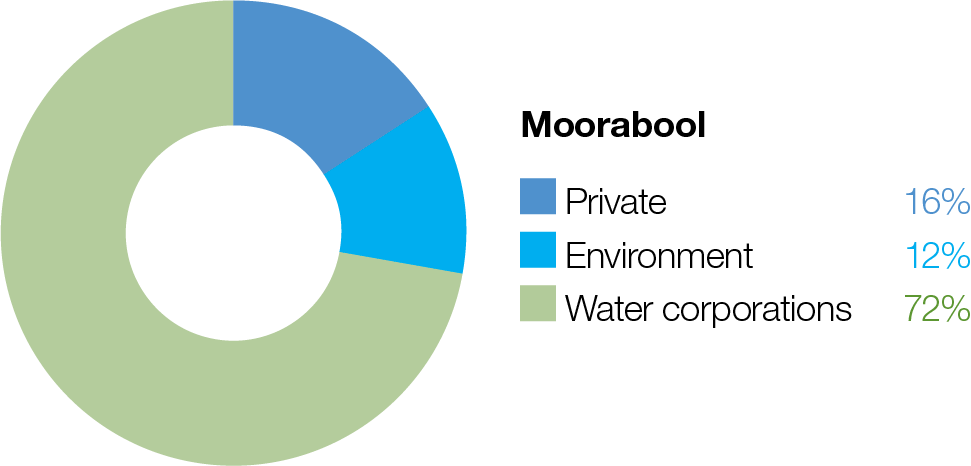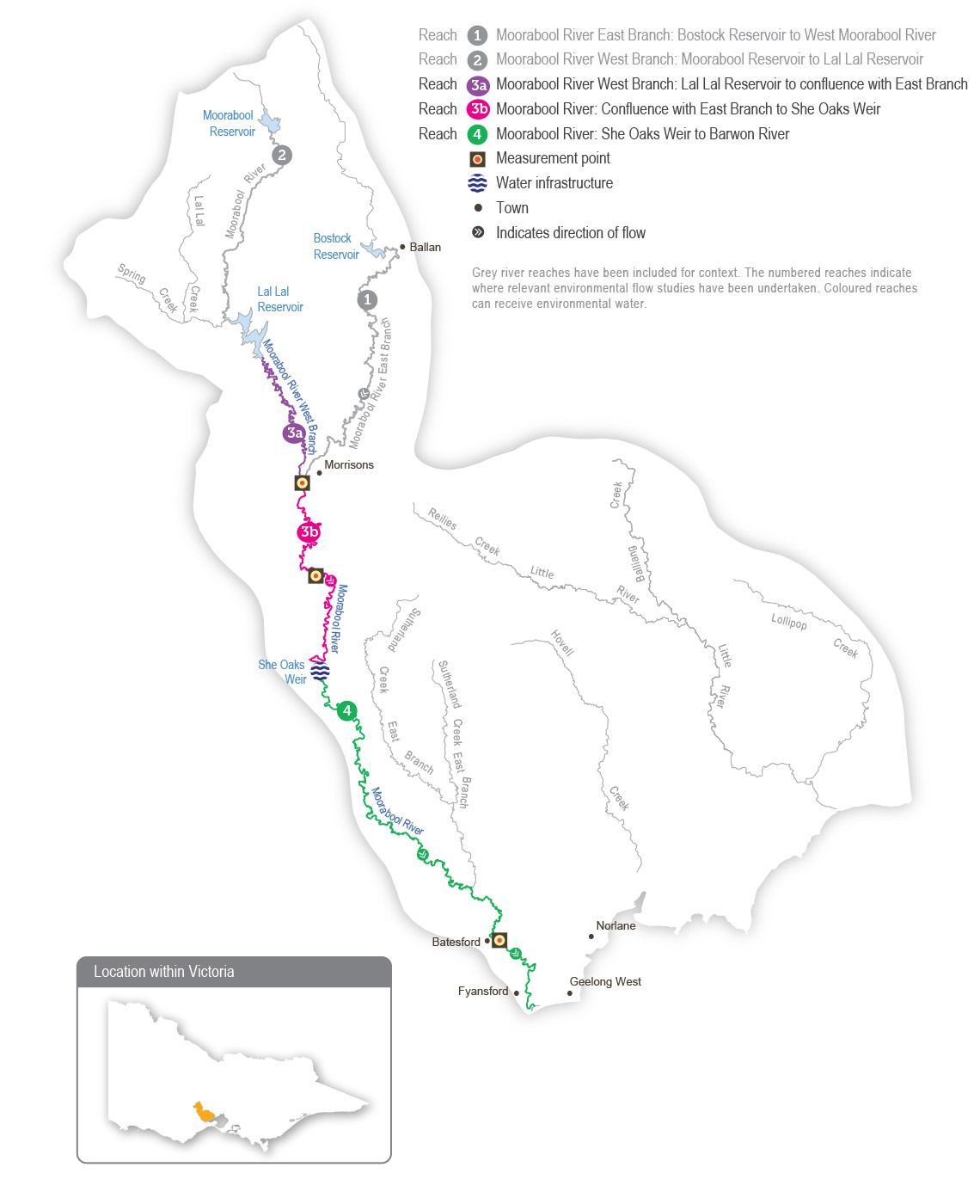The lower section of the Moorabool River between She Oaks and Batesford has nine private diversion weirs that are significant barriers to fish. These barriers have increased the extent of slow-flowing habitat and reduced habitat diversity.
Water allocated to the Moorabool River environmental entitlement is stored in Lal Lal Reservoir. The entitlement references passing flow, a significant component of annual streamflow and helps maintain a low flow through winter. Water use is limited by inflows to the reservoir and by a use cap specified in the entitlement. The priority reaches for deliveries of water for the environment are between Lal Lal Reservoir and She Oaks Weir (reaches 3a and 3b, as shown in Figure 3.6.1), as that is where the small amount of available water can have the most benefit. Environmental flows may also benefit flow-dependent values in the reach between She Oaks Weir and the confluence with the Barwon River.
The Moorabool system is a water supply catchment for Barwon Water and Central Highlands Water. Releases from Lal
Lal Reservoir for urban water supply contribute to environmental outcomes in reach 3a and 3b (above Barwon Water’s diversion point at She Oaks) and allow more efficient delivery of water for the environment to reach 4. Barwon Water and the Corangamite CMA coordinate operational and environmental releases, where possible, to optimise these benefits.

Proportion of water entitlements in the Moorabool River held by private users, water corporations and environmental water holders on 30 June 2020



